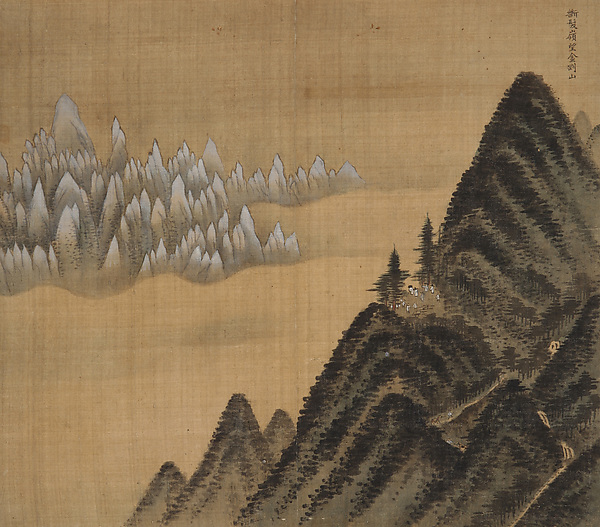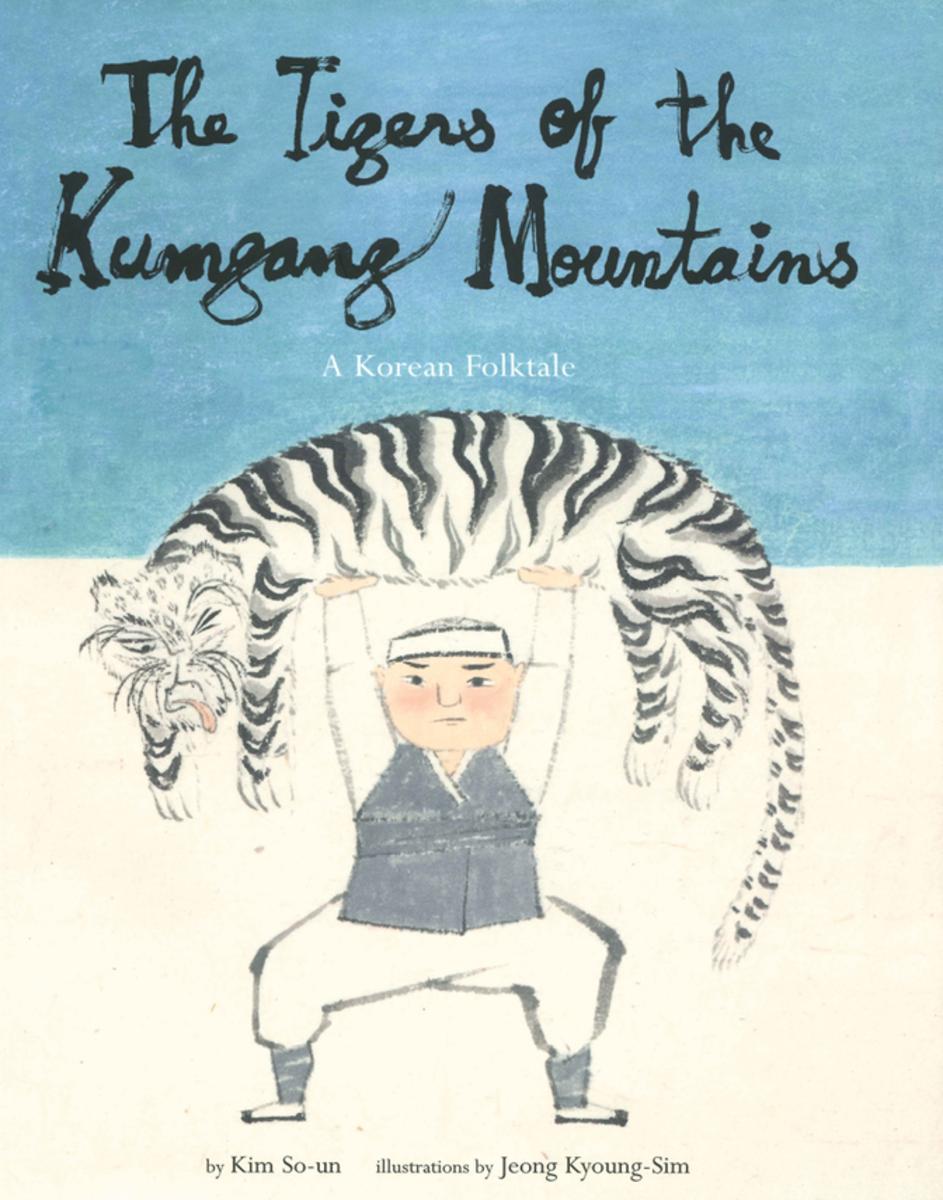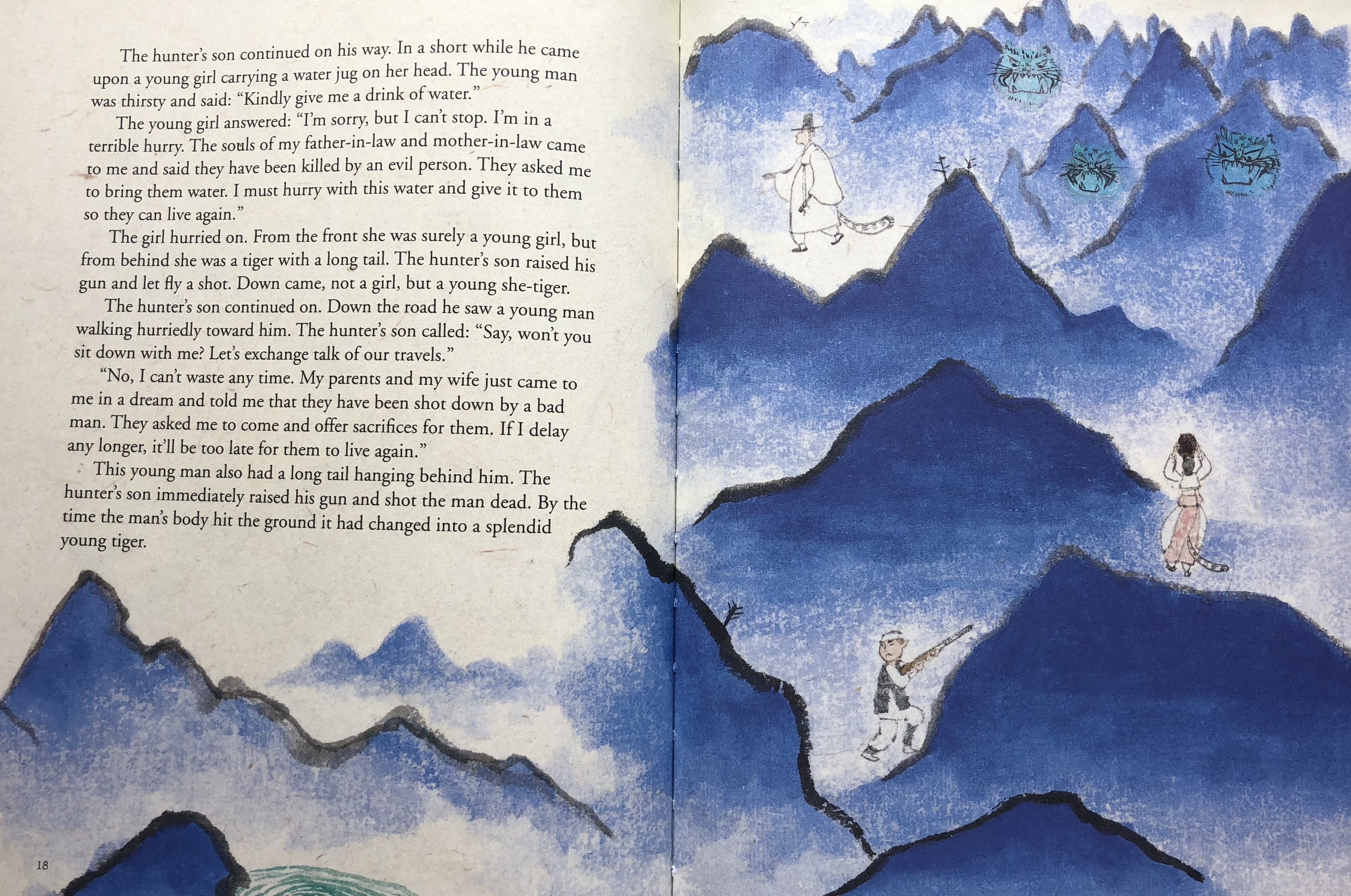
Album of Mount Geumgang by Jeong Seon (artist name: Gyeomjae); ink and light color on silk (1711). From the new Metropolitan Museum of Art exhibit Diamond Mountains: Travel and Nostalgia in Korean Art.
Right now, the world’s cameras are focused on Pyeongchang (Go Chloe Kim!). But guess what? The hills of Pyeongchang are supposedly nothing compared to Korea’s most famous mountain range just 90 miles away —the Kumgang mountains. This stunning landscape of jagged granite peaks and crystalline waterfalls is the setting for many of Korea’s classic legends and has inspired artists for more than a millennium. The catch is, the Kumgang mountains (aka the Diamond Mountains) are located in North Korea, and it has been impossible for outsiders to visit there for the last decade.
Just a week ago, the Metropolitan Museum of Art opened “Diamond Mountains: Travel and Nostalgia in Korean Art,” an exhibit dedicated to art inspired by the region, featuring about 30 works dating from the 18th century to present day. Honestly, I’ve grown up looking at Korean art all my life (the typical stuff: creaky painted screens, boring ceramics, etc) and I had never been the least bit interested in Korean paintings until seeing this show. The works, some of them never before shown in the U.S., have a fantastical quality that takes you out of time and place. They bring to mind Caspar David Friedrich and Thomas Cole — but also what Tina Fey’s daughter once said about fairyland (or whatever):
So I went back and found a picture book I bought my kids some years ago: The Tigers of the Kumgang Mountains (2005) by Kim So-un with illustrations by Jeong Kyoung-Sim, based on a Korean folktale.
It’s about a young man who journeys to the Kumgang mountains to hunt down the god-like tiger that killed his father. The young man first has to undergo a series of near-impossible tests to prove he is up to the challenge; once he finally confronts the tiger (who is, by the way, the size of a whale), the creature swallows him. Inside the tiger’s belly he meets the daughter of a king (remember this is a folk tale!) and they hatch a sneaky way to escape (involving a giant bear).
 The story is pretty strange, even for a folk tale. But younger children willing to overlook the holes in logic will find it mesmerizing. And the illustrations, based on traditional Korean painting techniques, capture a lot of the magic and mystery of the Diamond Mountains.
The story is pretty strange, even for a folk tale. But younger children willing to overlook the holes in logic will find it mesmerizing. And the illustrations, based on traditional Korean painting techniques, capture a lot of the magic and mystery of the Diamond Mountains. 
P.S. THANK YOU, CHLOE KIM!!! KOREAN-AMERICAN PRIDE!!!!

